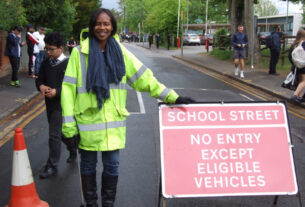One cheer for the Government’s Cycle Safety Proposals?
Last Summer, the Government held a consultation on safety for people who cycle and walk. This was part of the launch of the Cycling and Walking Investment Strategy.
RCC replied with 18 suggestions covering design of routes for cycling, roads policing, training and the Highway Code.
Last autumn, the Government published its response: https://www.gov.uk/government/consultations/cycling-and-walking-investment-strategy-cwis-safety-review
The response recognises eight areas for action:
- Promoting greater understanding of all road users;
- Prioritising cycling and walking;
- Protecting vulnerable road users;
- Safer overtaking;
- Improving awareness of vulnerable road users;
- Compliance with road traffic rules and laws;
- Promoting a positive image of cycling and walking.
It is characteristic of the current Government to use words when it sees something that it knows is popular, but which it doesn’t want to do anything about.
The response on cycling and walking safety is full of warm words, but very short on meaningful action and even shorter on money.
On cycling infrastructure, the response recognises that shared-use is “contro-versial” with people who walk, cycle or are visually-impaired, and that there are “examples that have been implemented inappropriately or poorly designed” (RCC nominated part of NCN422).
The Government will update guidance on infrastructure design, but this is just words. The guidelines will not be requirements, because the Government believes “it is better for local Councils to continue to be responsible for their design standards and implementation”.
RCC proposed that Government funding should only be used on Council and Highways Agency schemes that meet national guidance; they haven’t even agreed to that.
Even when bad design continues, the Government action might only be “highlighting examples of poor local design and implementation in future”.
Wow! Look forward to further mediocre designs which are slower and more dangerous than the road and which encourage hostile reactions by people driving because “you’re not on the cycle path”.
The Government has undertaken to review the Highway Code with a focus on “improving safety for cyclists and pedestrians. This may look, for example, at overtaking, passing distances, ways to emphasise cyclist and pedestrian priority at priority-junctions, opening vehicle doors…” .
The response is unusually firm on close-passing, stating that “we will be ensuring that the advice on overtaking vulnerable road users and minimum passing distances is clear and well understood”.
However, the other undertakings fall victim to that little word “may”. It, combined with the note that “a review focusing only on cycling and walking elements, could still take up to three years” means there won’t be any action soon.
Each year of delay, about 170 people will be injured by careless opening of vehicle doors. I feel the low-point of the response is that around enforcement, which it states is “is a very important issue to vulnerable road users”.
It trumpets “£100,000 to support the police to develop a national back office function to handle footage provided through helmet-cam and dash-cam evidence”. Anyone with experience of an IT project will know that £100,000 is about enough to pay the project manager.
It won’t get any coding done, or provide any hardware. Given the total budget of the Department for Transport, £100,000 is about as condescending as it gets.
Compare it with £480,000 to the RAC Foundation and police for crash investigation, or £2,000,000 for the ‘Driver 2020’ programme.
The response is equally weak about parking in mandatory cycle lanes; this responsi-bility is again palmed-off on poorly resourced local Councils, so nothing will happen.
RCC called for prohibition of parking in cycle lanes, and a reverse to cuts in traffic police; the Government proposes neither. Training of all road users gets the same treatment: more warm words, but very little compulsion for anyone.
The response does suggest that more people who drive should do a Bikeability course and experience what cycling is like. This might be achieved through offering lower vehicle insurance for people with Bikeability 3, or offering it as part of on-going training for people who drive for work, but again there’s no requirement involved.
There are some other minor points that are welcome, such as research into why about 30% of crashes involve “failing to see”, and revising the British Standard for cycle lights. Overall, however, the response is disappointing and I’m surprised that it got such a welcome from national cycling organisations.
Perhaps they feel that its tone was much more positive that it could have been, and that annoying the Government won’t get us anywhere.
RCC, however, wants more.
Peter Howe WoBC Campaigner for RCC



“eight areas for action” but only 7 bullet-points. Has something been missed?
Many years ago I wrote to then-Transport Secretary Gwynneth Dunwoody to say driving test candidates should require a cycling proficiency certificate. It would provide an incentive to cycle, teach how to use the road in an environmentally sensitive way and boost fitness before sitting behind the wheel.
All these years later, it appears the prospect of cheaper insurance with a Bikebility cert is the best they can come up with.